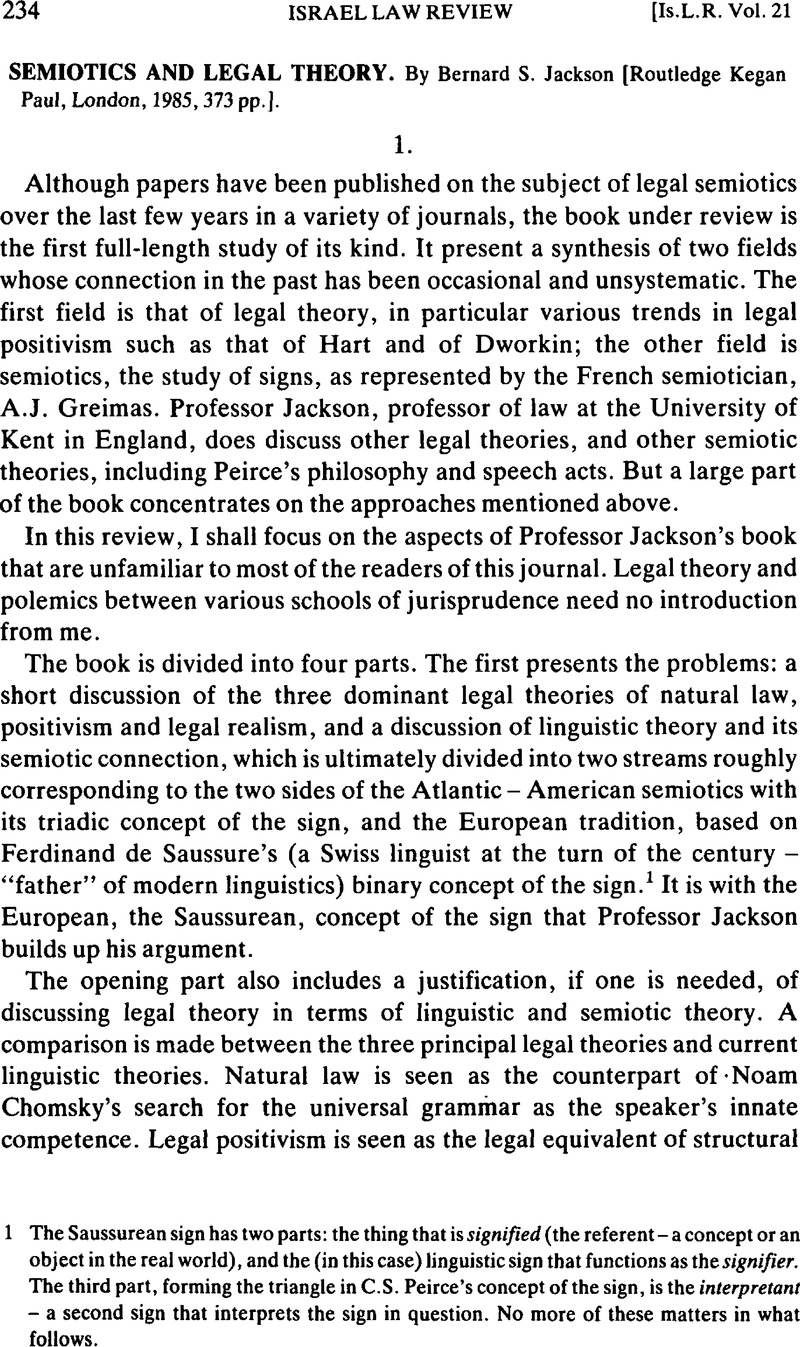Published online by Cambridge University Press: 16 February 2016

1 The Saussurean sign has two parts: the thing that is signified (the referent – a concept or an object in the real world), and the (in this case) linguistic sign that functions as the signifier. The third part, forming the triangle in C.S. Peirce's concept of the sign, is the interpretant – a second sign that interprets the sign in question. No more of these matters in what follows.
2 Greimas, A.J. and Landowski, E., “Analyse sémiotique d'un discours juridique” in Sémiotique et sciences sociales (Paris, Seuil, 1976)Google Scholar.
3 The pioneer work in this field is Propp, Vladimir, Morphology of the Folktale (Bloomington, 1958)Google Scholar. This is a translation of the original Russian work which was published in 1928.
4 The author has retained the French terms for the Greimasian semiotic model. I see no apparent reason for this, hence I have translated them where appropriate (except the word “actant”). Credit should be given to Professor Jackson for the first commentary in English on Greimas and Landowski's work.
5 Hohfeld, W.N., Fundamental Legal Conceptions as Applied to Judicial Reasoning (New Haven, Yale U. P., 1919)Google Scholar.
6 Calloud, J., Structural Analysis of Narrative (Phil. & Miss., Fortress Press and Scholars Press, 1976)Google Scholar.
7 As in MacCormick, D.N., Law as Institutional Fact (Edinburgh U. P., 1973)Google Scholar.